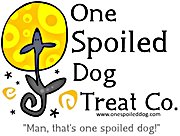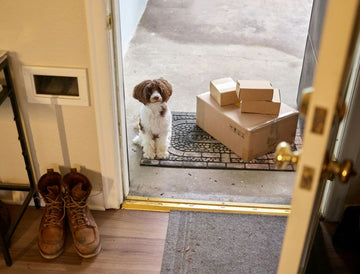When picking out dog treats, most pet owners focus on ingredients, flavor, and nutritional value. But the packaging itself is just as important, it plays a vital role in preserving the product's quality, safety, and appeal. Whether you’re buying treats for your furry friend or producing them for a business, understanding the ins and outs of dog treat packaging can help you make smarter decisions. Here’s what to look for and what to avoid when it comes to treat packaging.
What to Look For in Dog Treat Packaging
1. Food-Safe Materials
The safety of your dog’s treats starts with the materials used for packaging. Choose packaging made from food-grade materials that comply with pet food safety regulations. Look for options free from harmful chemicals like BPA, phthalates, and heavy metals, which can leach into the treats and harm your dog.
2. Airtight Sealing
Proper sealing is essential for keeping treats fresh and safe. Airtight packaging prevents exposure to air, moisture, and contaminants that can degrade the product over time. Resealable pouches, zip-lock closures, and vacuum-sealed bags are all excellent choices.
3. Durable and Tear-Resistant Design
Dogs can be persistent, and some may try to chew through flimsy packaging. Durable, tear-resistant materials reduce the risk of accidental ingestion of packaging pieces, which could harm your pet. Strong packaging also ensures the treats stay intact during shipping and storage.
4. Clear and Informative Labeling
Transparency matters when it comes to dog treat packaging. Look for labels that provide:
- Ingredients: A detailed list of contents, including potential allergens or additives.
- Nutritional Information: Caloric content and a guaranteed analysis for protein, fat, and fiber.
- Expiration Date: To confirm the treats are safe to consume.
- Feeding Guidelines: Recommendations tailored to your dog’s size and activity level.
- Manufacturer Details: Contact information and location for accountability.
5. Sustainable and Eco-Friendly Options
Eco-conscious packaging is becoming a priority in the pet industry. Seek out recyclable, compostable, or biodegradable materials. Some companies also offer reusable containers or bulk-buy options to minimize waste, aligning with environmentally friendly values.
6. Appealing Design
While your dog won’t care about the design, eye-catching packaging can make a difference for pet owners. Bright colors, engaging imagery, and clear branding help products stand out on shelves and make it easier to find the treats your dog loves.
What to Avoid in Dog Treat Packaging
1. Non-Food-Grade Materials
Stay away from packaging that doesn’t clearly state it’s made from food-safe materials. Non-food-grade plastics, metals, or coatings can contain harmful substances that may transfer to the treats.
2. Thin or Flimsy Packaging
Cheap, thin materials might cut costs, but they often tear easily, exposing treats to air and contaminants. Worse, if your dog chews through the packaging, they could accidentally swallow pieces, leading to potential health issues.
3. Excessive Packaging
Too many layers of plastic, cardboard, or other materials are wasteful and don’t offer much additional protection. Look for brands that balance product safety with sustainable practices.
4. Misleading or Incomplete Labels
Avoid products with vague claims like “all-natural” or “human-grade” unless they’re backed by proper certifications or clear explanations. Labels should provide complete and accurate details about the treats.
5. Non-Resealable Bags
Packaging that can’t be resealed after opening exposes treats to air and moisture, leading to faster spoilage. If you purchase non-resealable bags, transfer the treats into an airtight container to keep them fresh.
6. Hard-to-Open Designs
Packaging that’s too difficult to open can be frustrating, especially during quick training sessions or when you’re rewarding good behavior. Look for closures that are secure but also easy to access.
Why Packaging Matters for Dog Treat Businesses
If you’re a dog treat maker, investing in high-quality packaging is critical to your brand’s success. Here’s why:
- Brand Differentiation: Professional, visually appealing packaging helps your product stand out in a competitive market.
- Consumer Trust: Food-safe materials and clear labeling build confidence with pet owners.
- Regulatory Compliance: Meeting pet food safety standards ensures your product is market-ready and avoids legal issues.
- Customer Convenience: Resealable closures and easy-to-read labels enhance the user experience, encouraging repeat purchases.
Conclusion
Dog treat packaging is much more than a wrapper—it’s a vital element that impacts safety, quality, and the overall customer experience. For pet owners, prioritize packaging that uses food-safe materials, offers airtight seals, and provides clear labeling. For business owners, high-quality packaging protects your product, boosts your brand’s reputation, and meets consumer expectations.
By understanding what to look for and what to avoid, you can make smarter choices that benefit both dogs and their humans. After all, your furry friends deserve treats that are as safe and enjoyable as they are delicious.




